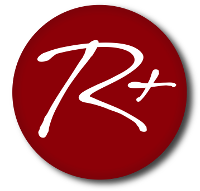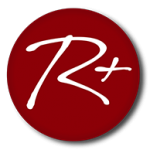Movement as dialogue
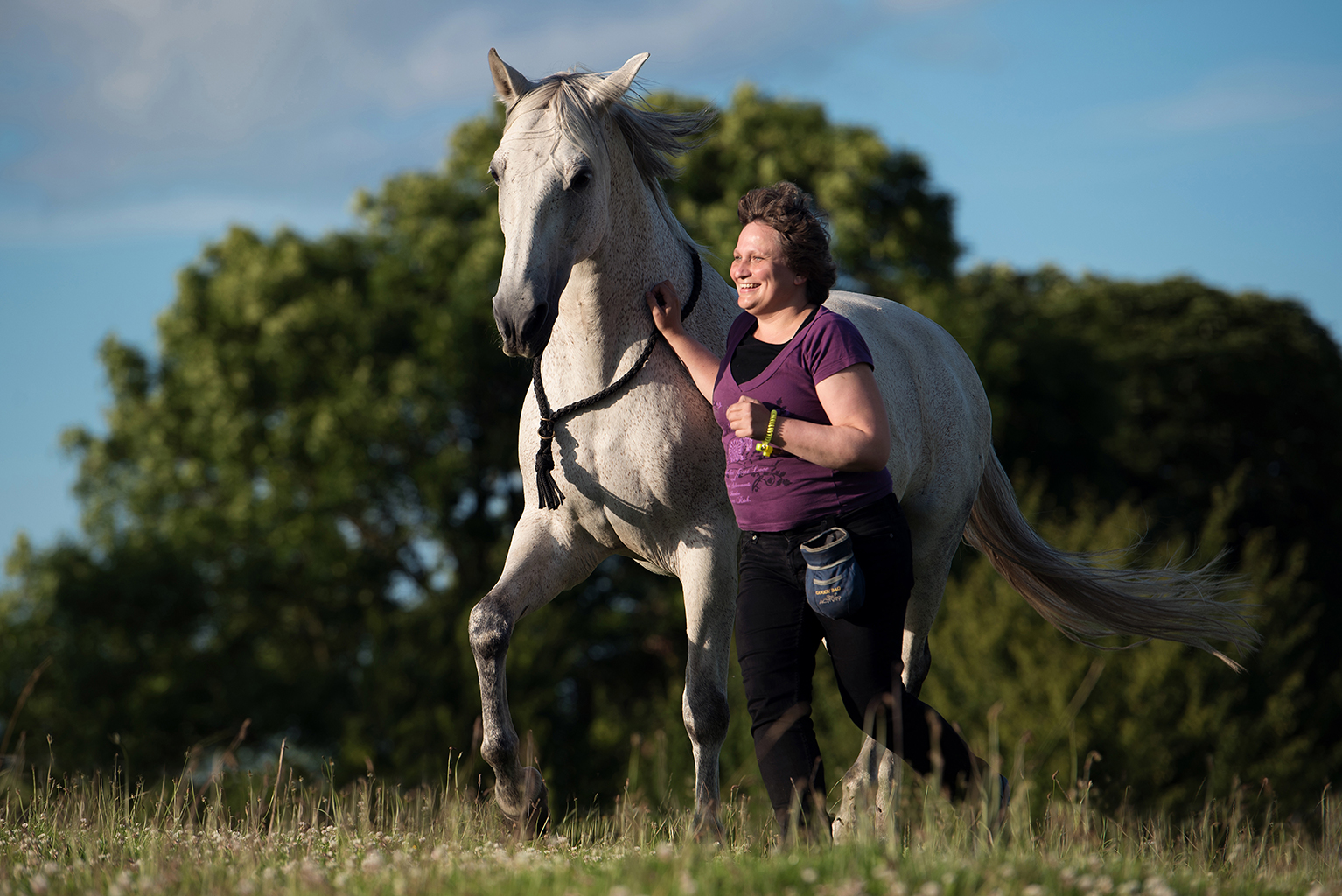
Being free together
The main reasons to do free work with horses are being free with the horse, discovering new patterns of movement, and finding joy in movement for me. I would like to enter into a dialogue of movement that allows human and horse to express themselves; in their personality, and with their current emotions. Thus, our movement dialogue becomes a space for relationship building. Both partners orient themselves towards one another; and sometimes one, next time the other take lead to set the pace or direct the way.
We seek connection in movement.
And we find it in e-motion.
Experience freedom
with your horse.
Two souls in unison
Many of us in free work are fascinated by the great ability to be in step, and the high level of synchronicity we can achieve if we precisely match the pace, direction and execution of our movements. We create an invisible bond of emotional affection.
You’ve frequently reached your goal even though you might think that you are only close to perfection. Actually, this final space for improvement contains the free space to be your Self.
Emotions are directly transmitted from one living being to the other; the magic of the moment arises when both “dance partners” completely direct their entire attention towards the counterpart. So, dance means passion and dedication to the moment, be it with another person or with a horse.
Heart and mind
The fantastic experience of having a sincere dialogue with your horse includes having empathy and a certain willingness to open up, and reveal yourself to the other. There are some explanatory models that can help to illustrate how this is possible between representatives of species that are as different as human and horse.
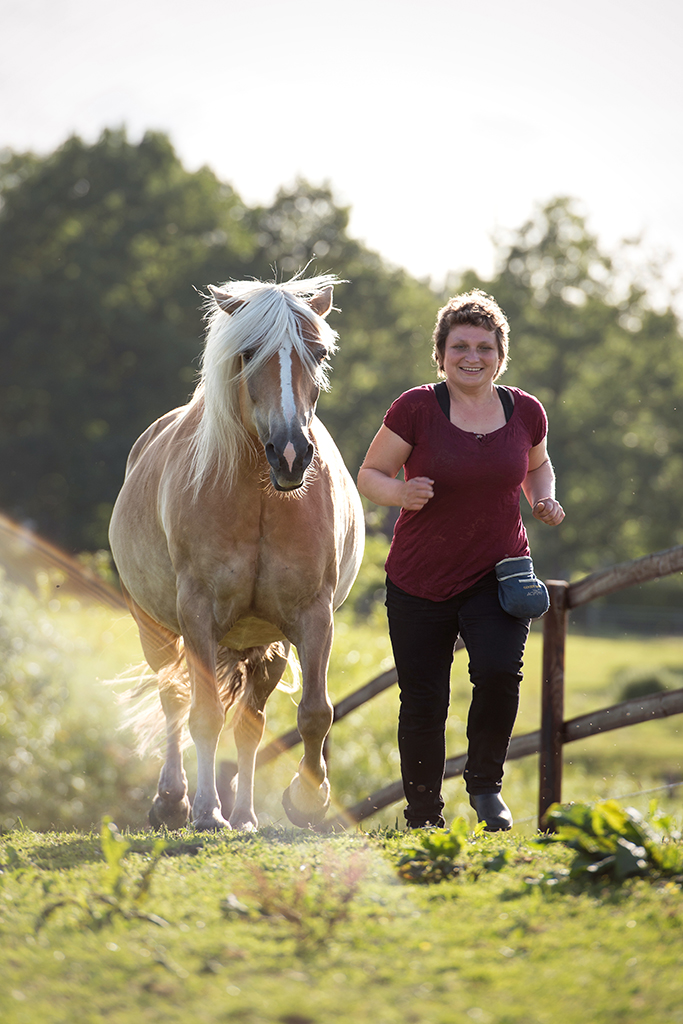
Horses are herd animals
It sounds trivial, and we all know this of course, but this simple fact carries significant implications for the behavior of animals. The horse, a typical herd animal, is perfectly prepared to find its place in a group, and to interact with others. A herd of horses thrives by the mutual exchange of body language, and only well-functioning herds make it possible that members can act as individuals but still feel as part of the collective they help to create. Horses move around with each other, they follow if a member of the herd takes up initiative, and silently exchange direction and pace. Furthermore, the herd maintains its formation in play and even in flight; each horse keeps a close eye on the other members of the herd, will consciously or subconsciously register when and where others intend to move, and will precisely react in an adequate way. As a result, the herd is able to move fast and in a coordinated manner, to perform harmonious changes of direction, and to synchronize their hooves in common canter.
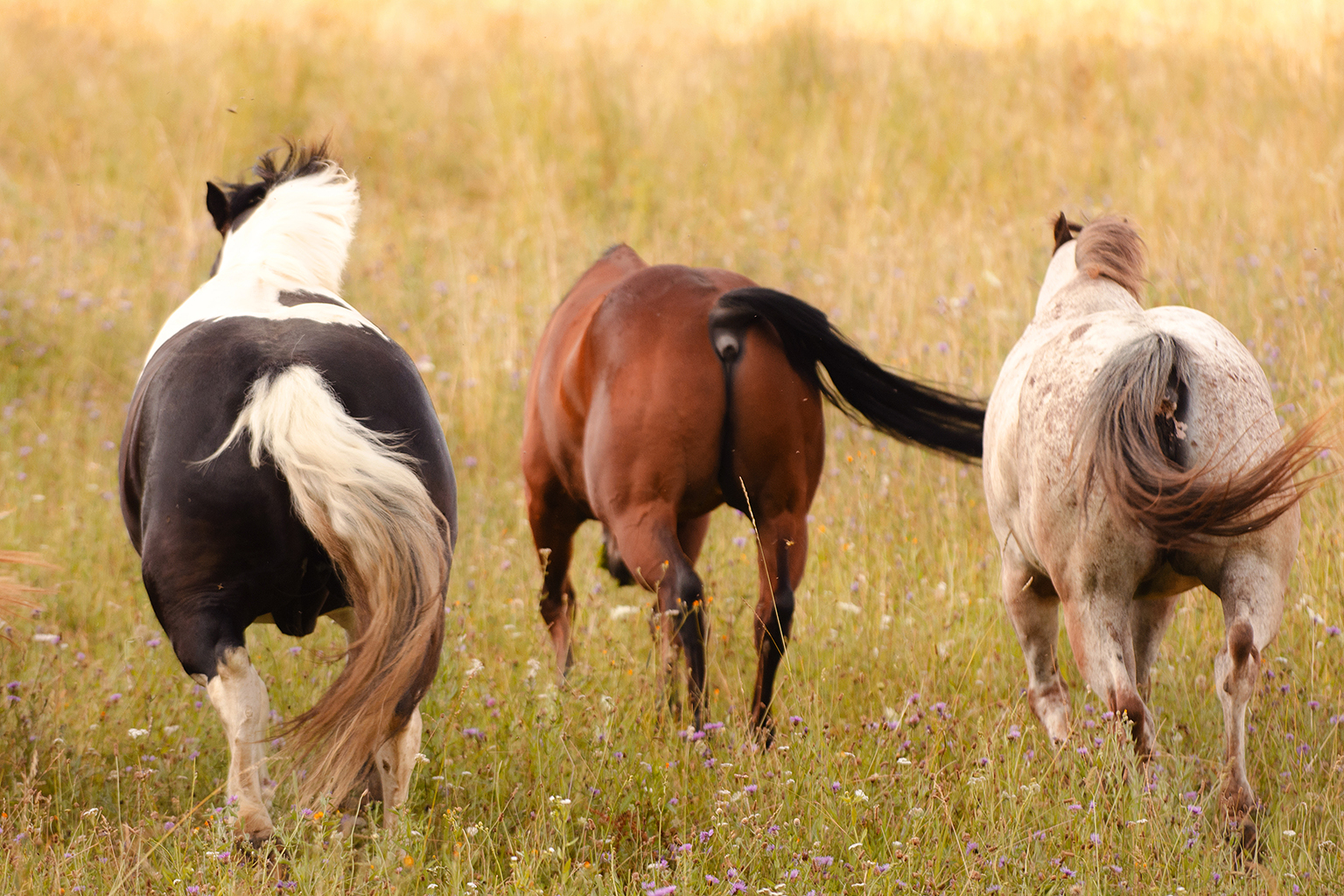
Herd behavior in motion
Horse ethology examines, among other things, the exact mechanisms of movement within a herd. This work on “herd behavior” inspired by the behavior of fish or bird swarms reveals again and again that there are many similarities when it comes to behavioral strategies completely distinct animal species share with each other. Some basic principles have been discovered through the aid of computer simulations; it is possible to use them as core elements of our free work with one or more horses because they are universal “rules” all animals living in groups apparently follow in an intuitive way.
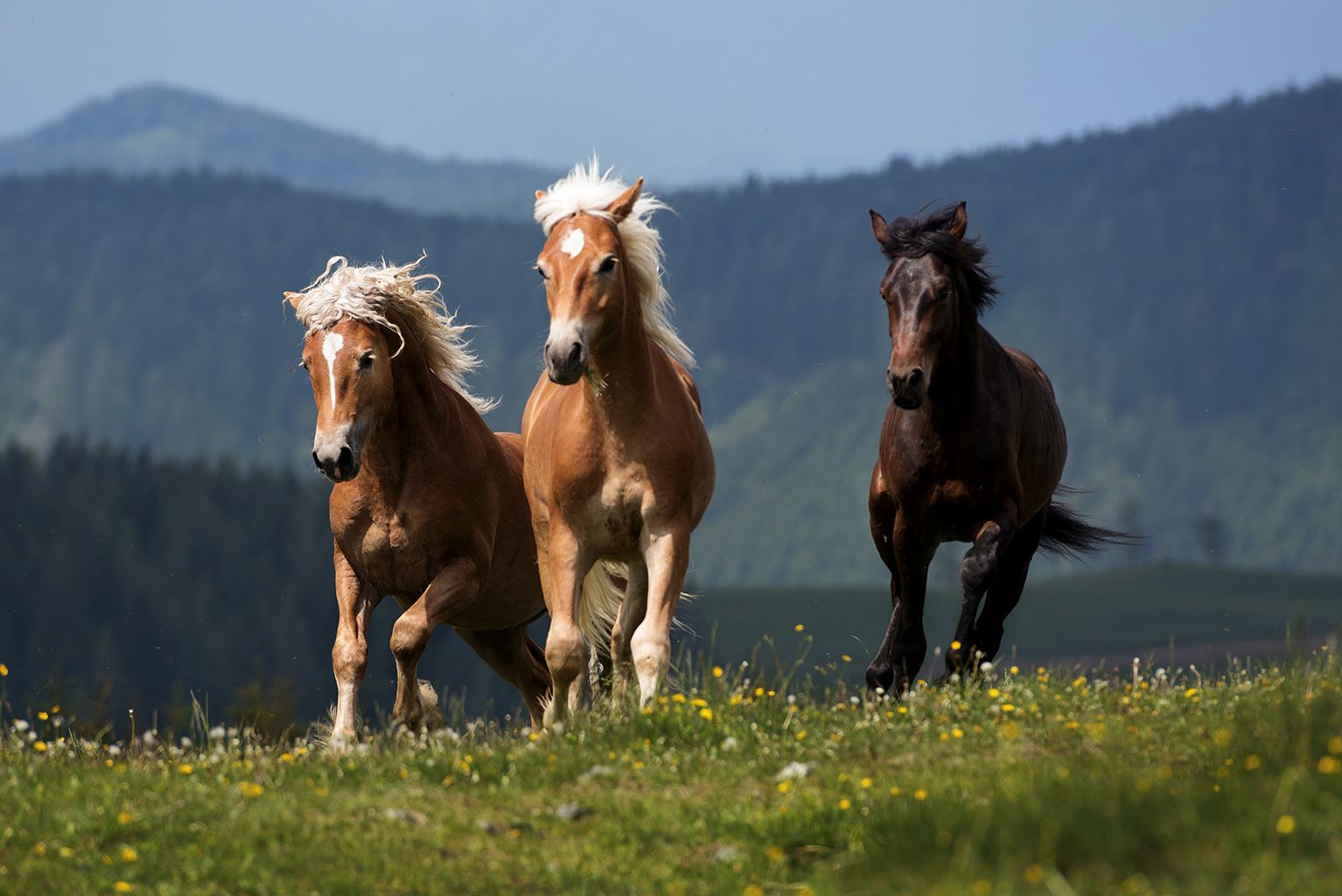
Be part of the herd
So, free works makes it possible for human beings to become a part of the herd, and to synchronize motion energy, pace, and direction with their horse; admittedly, our bipedal motion patterns naturally differ from the horse’s four-legged ones. Anatomical differences between horse and human aside, however, and we all behave much like the elements in Craig Reynolds’ 1986 computer simulation as soon as we belong to a group. We can summarize the resulting rules of herd movement or movement of members of larger groups in the following three basic principles:
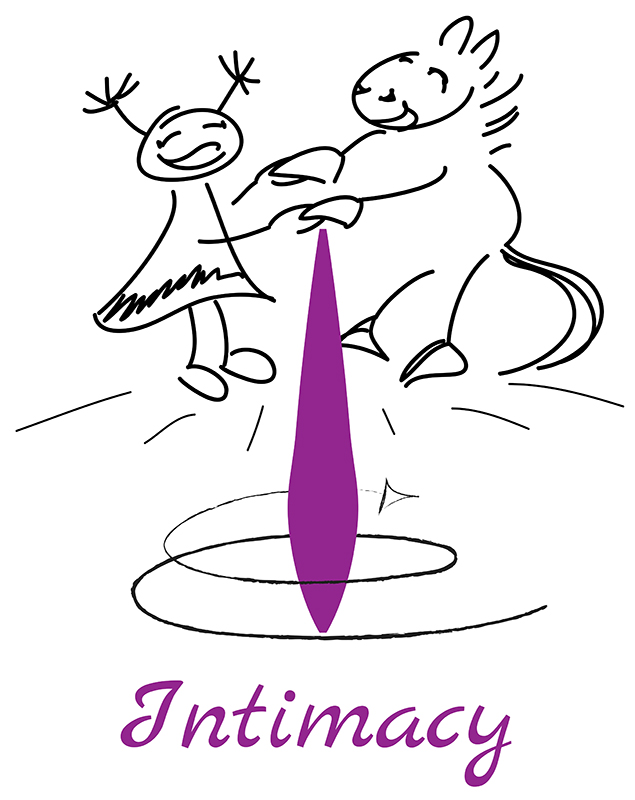
1 – COHESION
Orientation towards the center
Horses (just like humans) tend to seek a position in relation to an invisible center between them and other individuals. They keep an individually slightly different distance to each other so as not to touch the counterpart. Similar to molecules in a drop of water, living beings entering communication try to occupy the smallest possible space without violating the other individual „tiny molecules’“ individual distance.
Form a circle
As a rule, the term cohesion can be imagined as „attempt to form an imaginary circle with the actors of this communicative exchange „. Cohesion describes how the group connects as a whole because each one is aligned in relation to at least one other member of the group, depending on group size. In free work a dialogue of movements arises out of the cohesion of human/horse teams; we also act around an imaginary center, and the center shifts towards one or the other partner depending on the specific role of each of them and the larger context.

2 – SEPARATION
Perceive your own space
The second aspect, separation, is a rule that describes how we perceive and comply with the space we require for ourselves. All individuals are intent on preserving their own space to act, and to maintain a surrounding, imaginary bubble that serves as free space. The concept of separation could be remembered as a rule of thumb, and defined more or less in the following way: „Move away when things get too tight.“ So, individuals will responsively move in an evasive manner to maintain the free space if other individuals come too close in common movement. For example, we can see this effect in the subway when human beings spread throughout the entire wagon, and prefer to take a free seat at a certain distance from fellow passengers.
Need for free space
When dealing with horses we can particularly recognize the need for freedom in unusual settings, for example in serenity training; many animals tend to surround themselves with a space that allows them to assess the overall situation, and to quickly escape in case of danger. Yet, we also see this need in rather mundane situations; for example, horses grazing next to each other maintain a certain distance that depends on their level of intimacy.

3 – ALIGNMENT
Body direction
The third aspect of herd movement governs how an individual positions its own body in relation to other herd members. All individuals have a natural tendency to intuitively align their form of moving with to the direction of movement of other group members. The dynamic unity of moving as a complete herd of horses is created in this way. Roughly speaking, this principle of herd behavior translates to „Orient yourself towards the envisioned goal of the other group members.“
Follow the line of sight
We human beings tend to move in certain ways in pedestrian areas, and we automatically follow the line of sight of other people; and we show similar behavior in many everyday situations. This kind of behavior helps horses and humans to avoid conflict, it directs the focus towards possible threats, and allows us to follow the reaction and subsequent movement of an entire group.
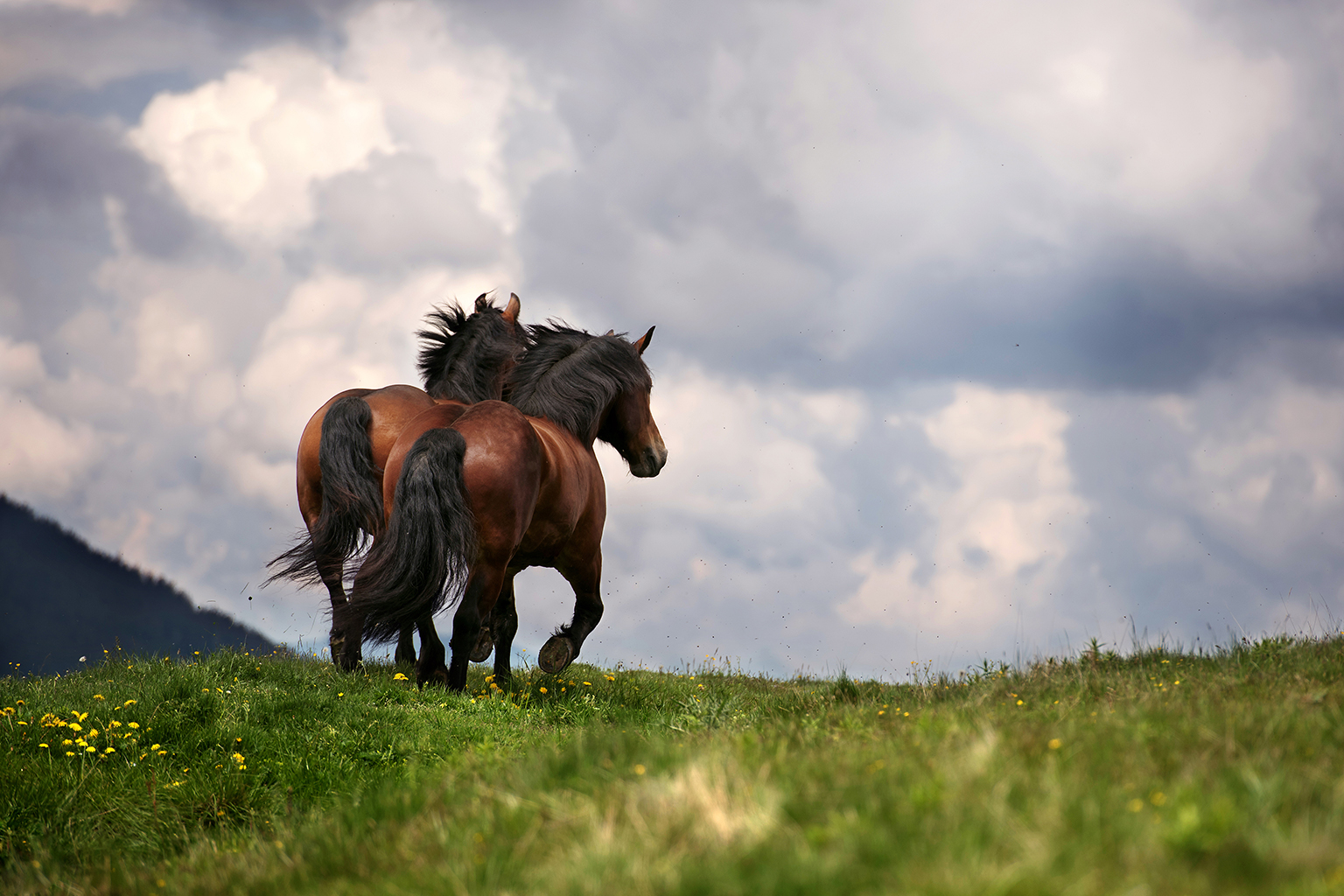
A neurobiological view at synchronicity
The easiest way to synchronize movement in free work is to allow both sides to act from an unconscious basis. Our emotional world is a complex structure that combines various sensations with physical reactions, and it is more or less controlled by our minds without the possibility for intervention. So, an increased release of the “bonding hormone” oxytocin will produce an atmosphere that likely creates harmonious and gentle movement. In contrast, increased levels of adrenaline tend to create a more stimulating or even alarming overall mood.

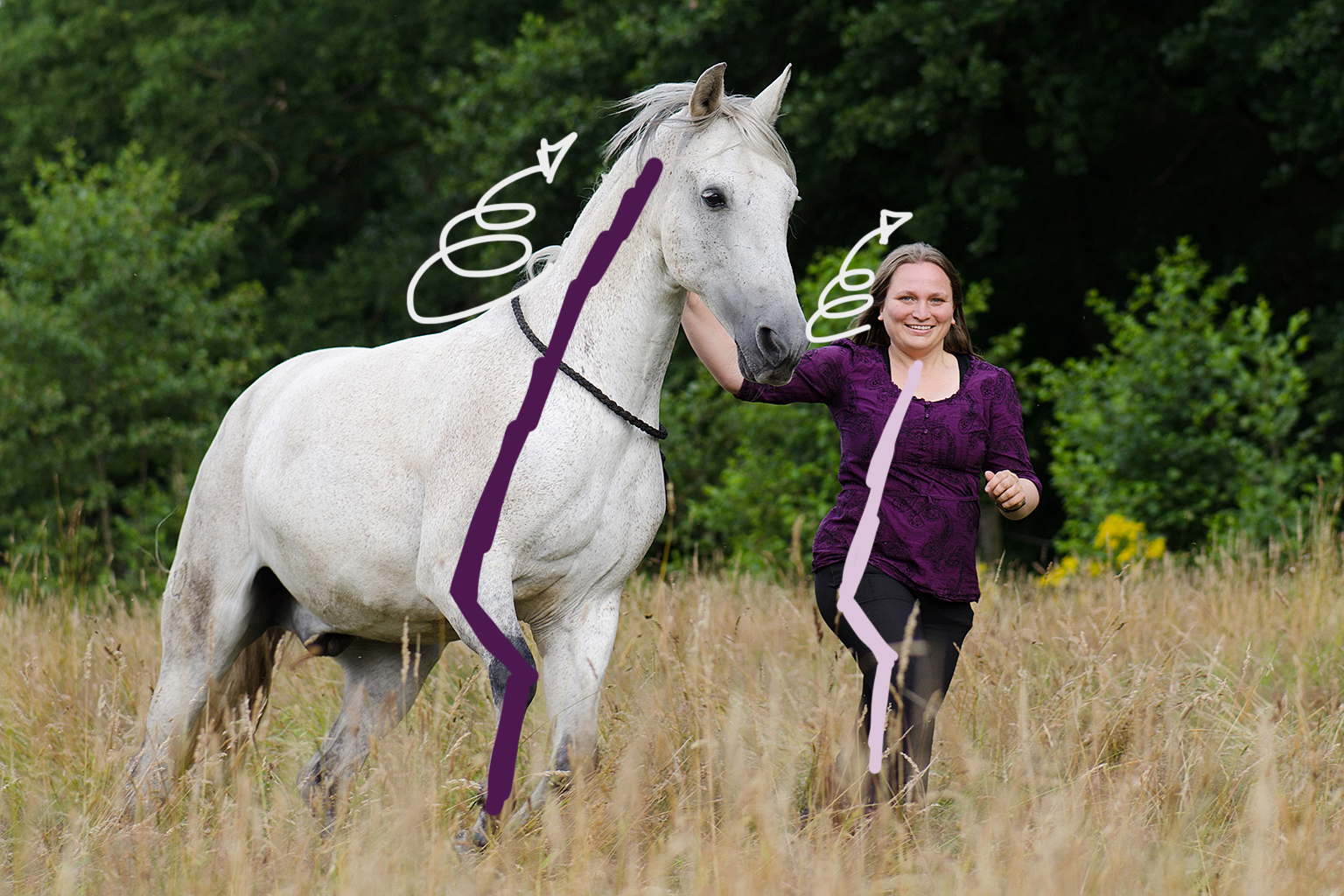
Mirroring as a biological principle
In addition to hormones, mirror neurons play a major role in the communication and formation of the herd. Newborns are already able to mirror their mother’s behavior just a few weeks after birth, and they attempt a first smile when their mother smiles at them. This ability that also exists in horses is the basis to develop our capacity to reflect the other by so called “mirroring”. Individual movements and postures but also gestures and facial expressions gradually and unconsciously start to converge as a consequence of mutual sympathy and familiarity with the other person; over time, their movements become more and more similar in pace and execution.
Your task is to discover yourself, and to open up for the other; no more and no less.
Empathic beings
Horses maintain a rather physical relationship with their closest friends, and even align their daily movement patterns. What is more, they do not only align their movements but also approximate breathing, direction of vision, and even heart rate. This special kind of relationship is primarily characterized by empathy; a reciprocal, trusting form of attention towards the other person’s actions, and even more towards the other’s true self. The above mentioned process of gradually mirroring a partner we like typically consists of several stages.
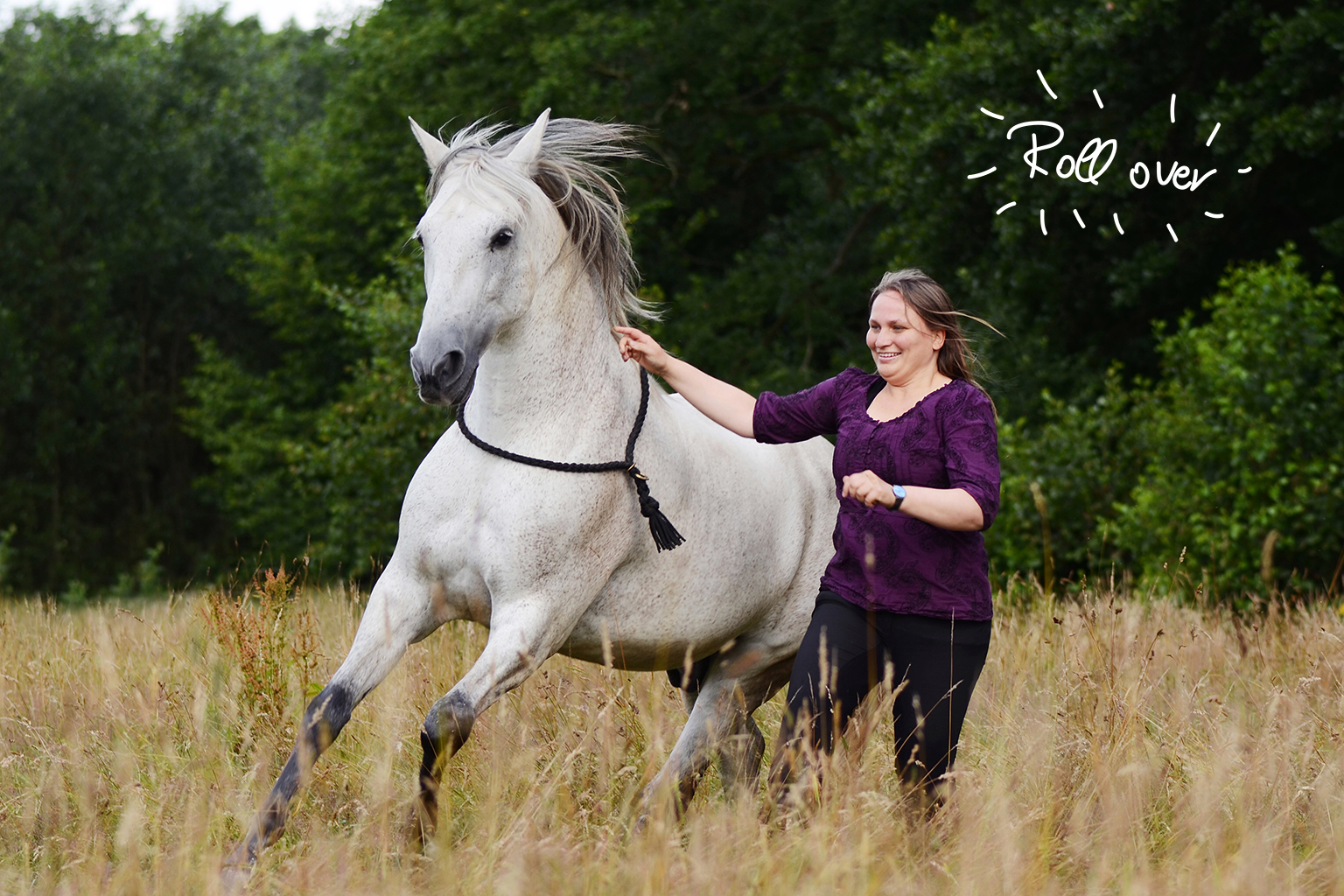
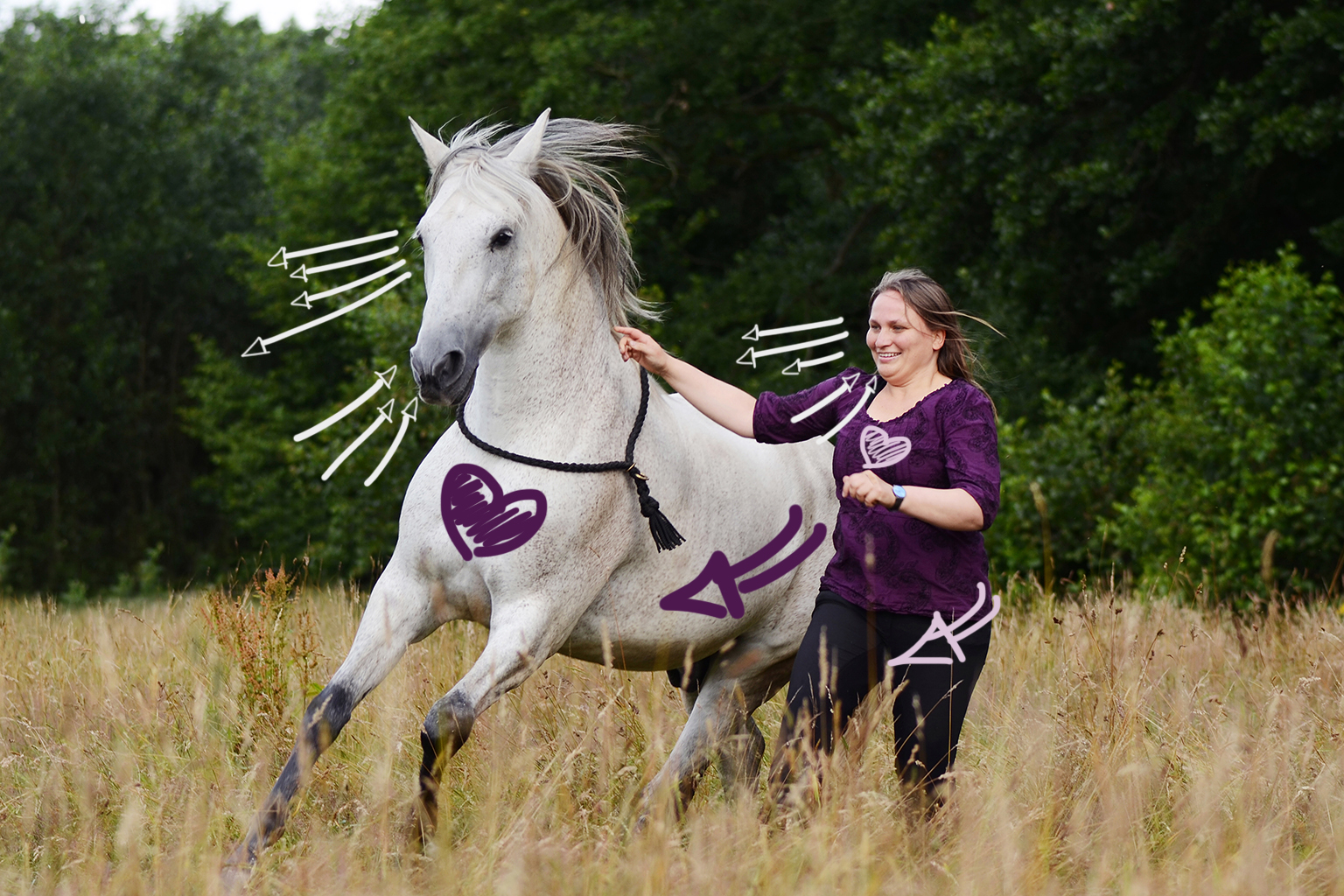
SYMPATHY – PHASE 1
Touching
The initial stage of establishing a dialogue of movement is characterized by having empathy with another living being, shifting one’s own focus towards the other’s movements, grasping the other’s particularities, and exactly observing the other’s motivation. First, a seemingly random, inconspicuous act of imitation happens that offers both individuals the emotional space they need to get closer, and open up to each other. Every single step of this alignment process is attentively observed to notice any possible reaction of the partner I am trying to imitate.
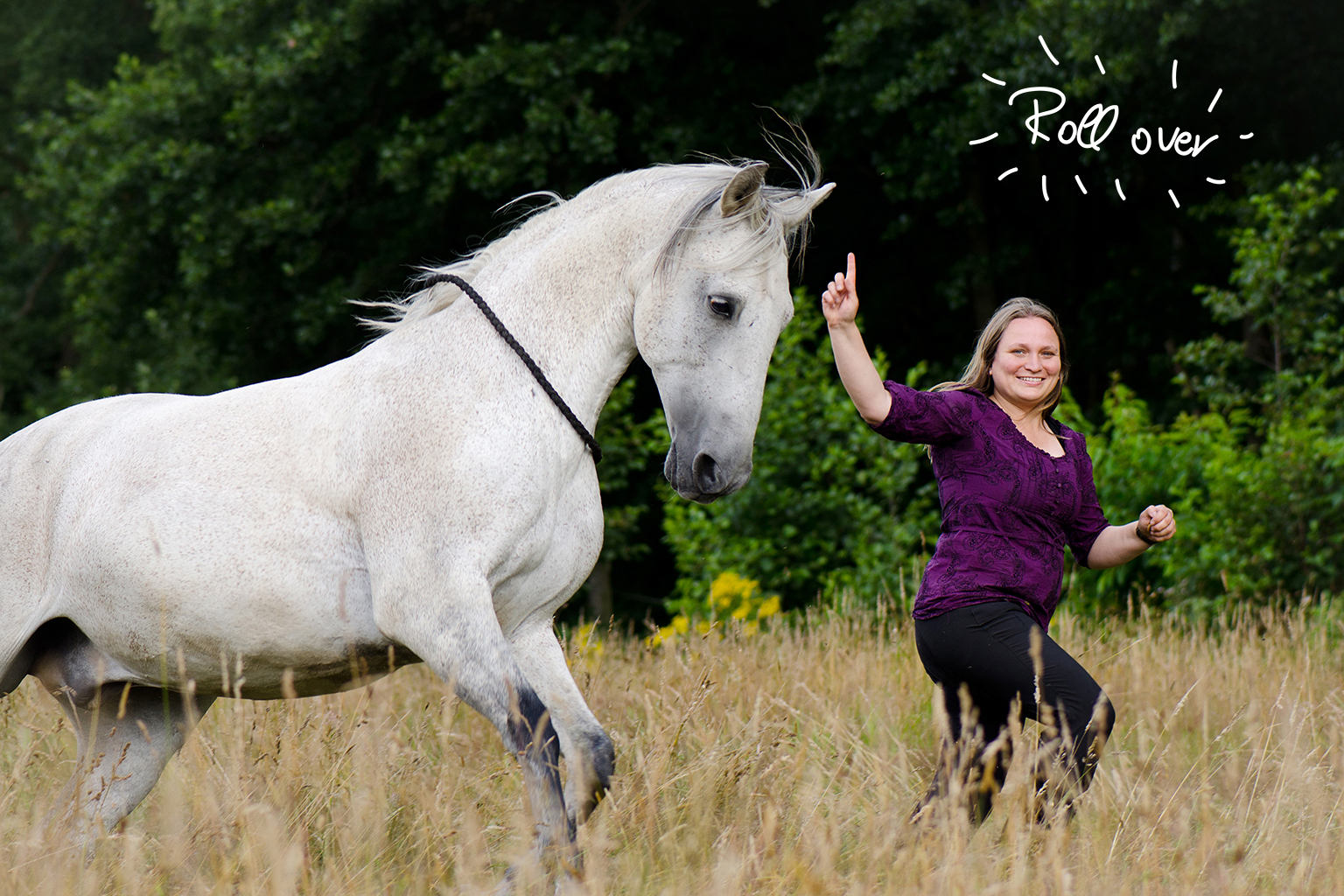
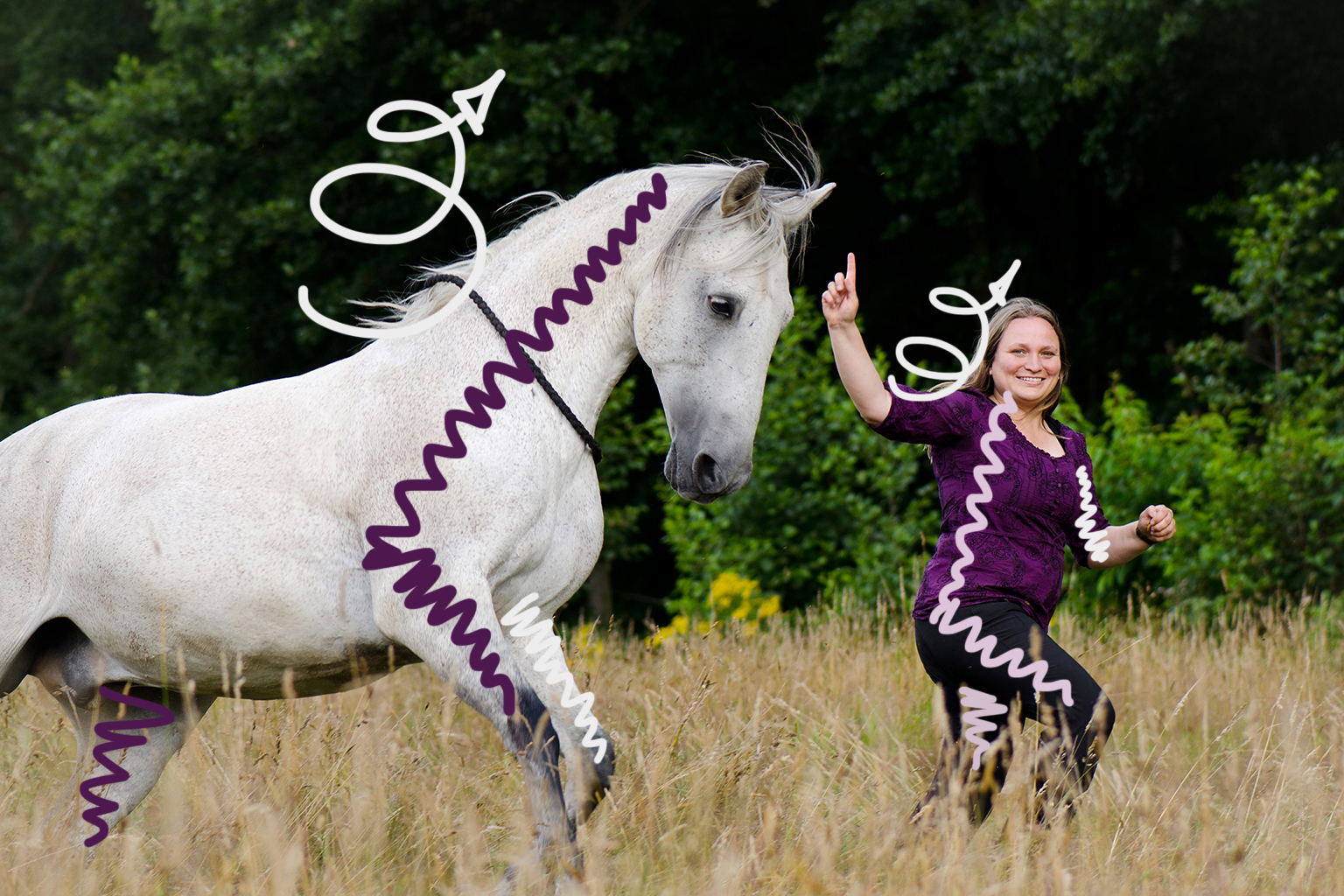
SYMPATHY – PHASE 2
Resonance
The process of getting to know each other establishes trust that results in a resonance between two bodies whose hearts start beating as one in a sense. Once we have reached this stage of free work, every single impulse or movement of one part carries importance for the other. It becomes impossible to distinguish the movement of one part from that of the other, and they begin flowing into one another until they merge into one encompassing form of movement. As a consequence, an invisible but extremely stable connection arises that can support human and horse to deal with difficult situations in the future. We form and “work” as a unit, thereby providing our partners with security and the certainty that this common interaction creates something that is bigger than any one of us could individually achieve.
Mirror neurons’ resonance mechanism
We attribute our ability for such resonance to the mirror neurons of our mammalian brains. These neurons allow us, and probably the horses as well, to not only perceive our own emotions but also to empathically react to those of others, and more or less experience their feelings ourselves. In a sense, our own action becomes an echo of the other individual’s emotions if we synchronize our movements, align our body language, and employ facial expressions. This also allows us to enter the horses’ emotional world, and to open ours to them; empathy thus becomes an important aspect in the process of building a team and establishing trust.
Rational or emotional?
Our system of mirror neurons unconsciously and constantly counterbalances our various emotions towards other living beings. For example, we sometimes experience a sudden rush of sympathy for someone but are not able to explain why we feel so strongly about this person all at once. In everyday practice with our horse we tend to rationally focus on our goals, on the progress we make, and on the end result we desire; as a result, our pragmatic mind represses our subconscious mind. True communication based upon mirror neurons only takes place at the unconscious level, however. So, it might become difficult or even impossible for you to enjoy the pleasure of intuitive perception if you are not able to detach yourself from explaining, analyzing and demanding without end.
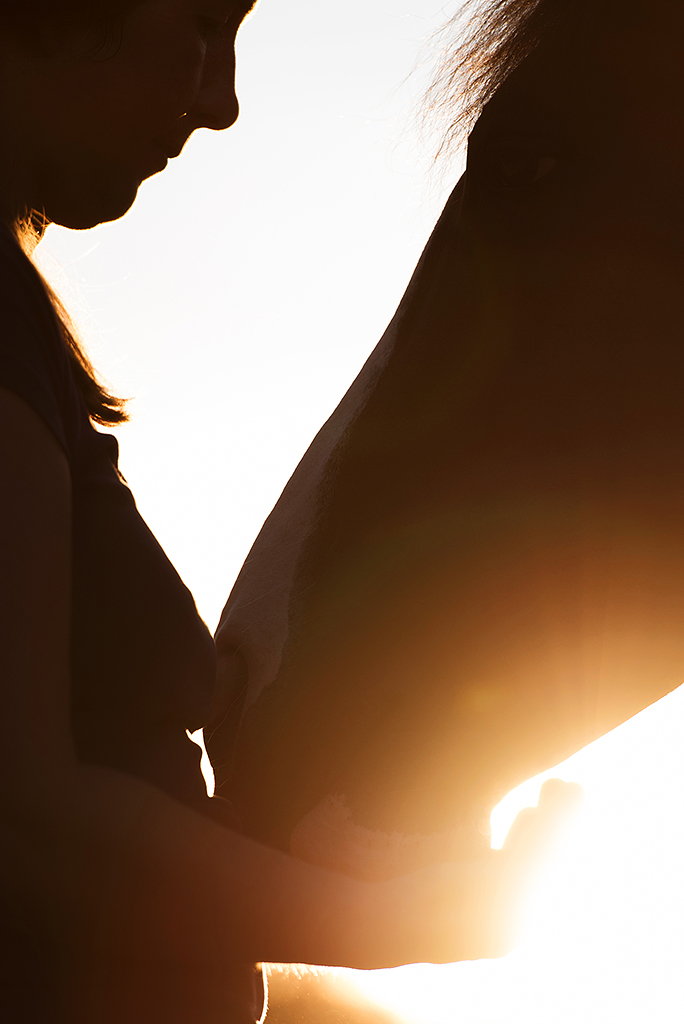
The rainbow highway
Another special feature of the mechanics of mirror neurons is of particular relevance for the synchronization of movement. Emotions spread as if on a rainbow highway through our mammalian brains; they arrive before our rational mind has even finished tying its shoes. So, it is possible to quickly grasp an entire situation on the emotional level, and consciously assess the event only afterwards. This creates an opportunity to predict the development of a sequence, for example, the direction of movement, the expected speed, and the energy involved in a certain situation. Furthermore, horses are particularly gifted to perceive the other’s intention of movement; they intuitively capture on the emotional level their counterpart’s intention to move in a certain direction.
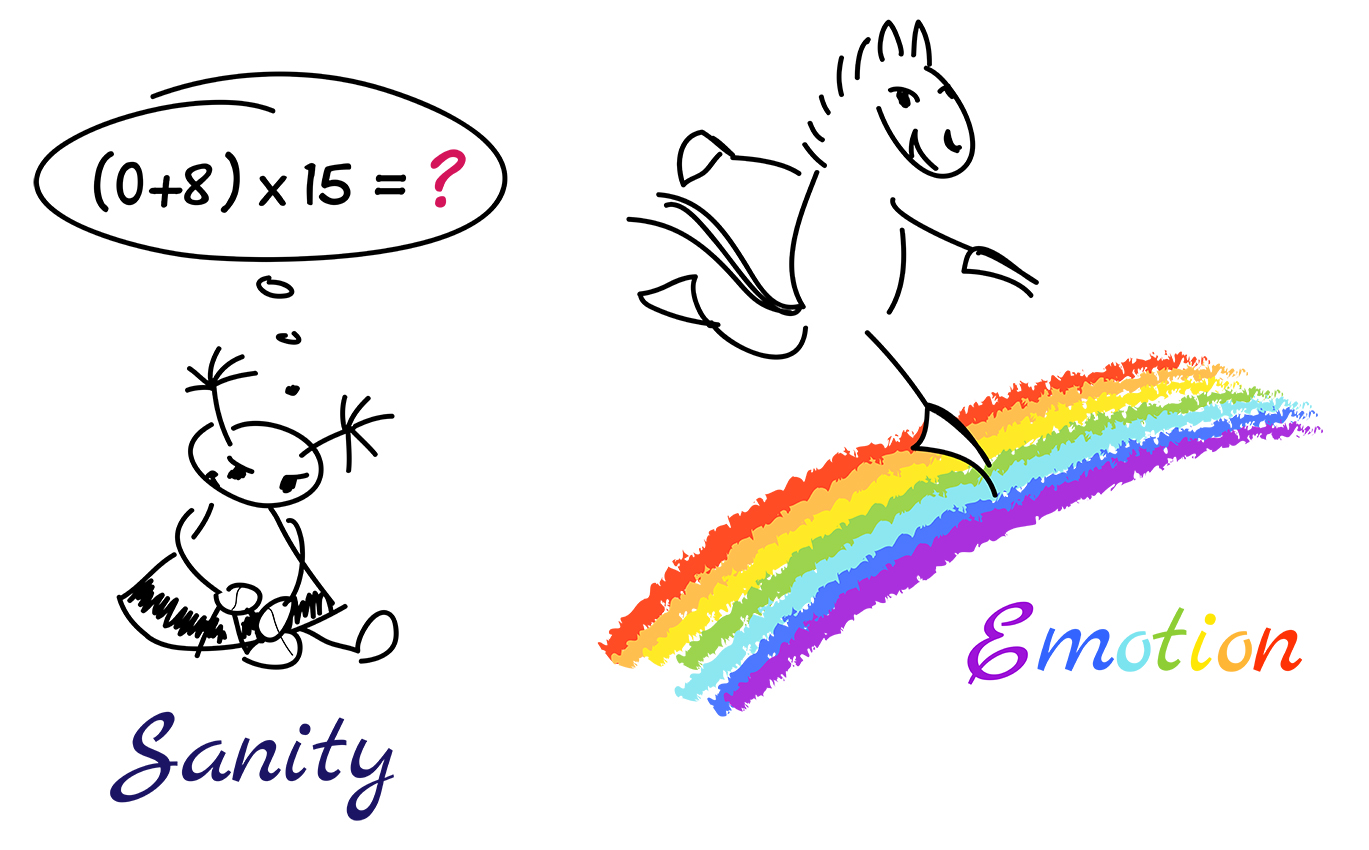
„Use it or lose it“
We adult human beings frequently reason in a rational way, and thereby gradually lose our innate ability to instinctively and immediately grasp entire situations. All processes and mechanism in our brain are governed by the guiding principle: “use it or lose it”. This means, we always have exactly the brain our everyday live requires, and we shape the exact form it has: The functional areas we frequently use are strengthened, and less used skills gradually waste away.
The way to connectedness
We can try to actively reflect the intention of our horse if we want to build a profound relationship based upon friendship. So, we perceive a minimal contraction our partner’s muscles that indicate a possible change in direction, and we just follow so that coordinated movement patterns can emerge. This allows horse and human to truly perceive the other as an individual; emotionally but also physically through the harmony and unity of common movement. These two levels are inextricably linked; we cannot conceive emotions without physical reactions, and we cannot imagine movement without emotion. You cannot have one without the other: Body and mind, brain and feeling always complement each other.
Marlitt Wendt & Conny Ranz

